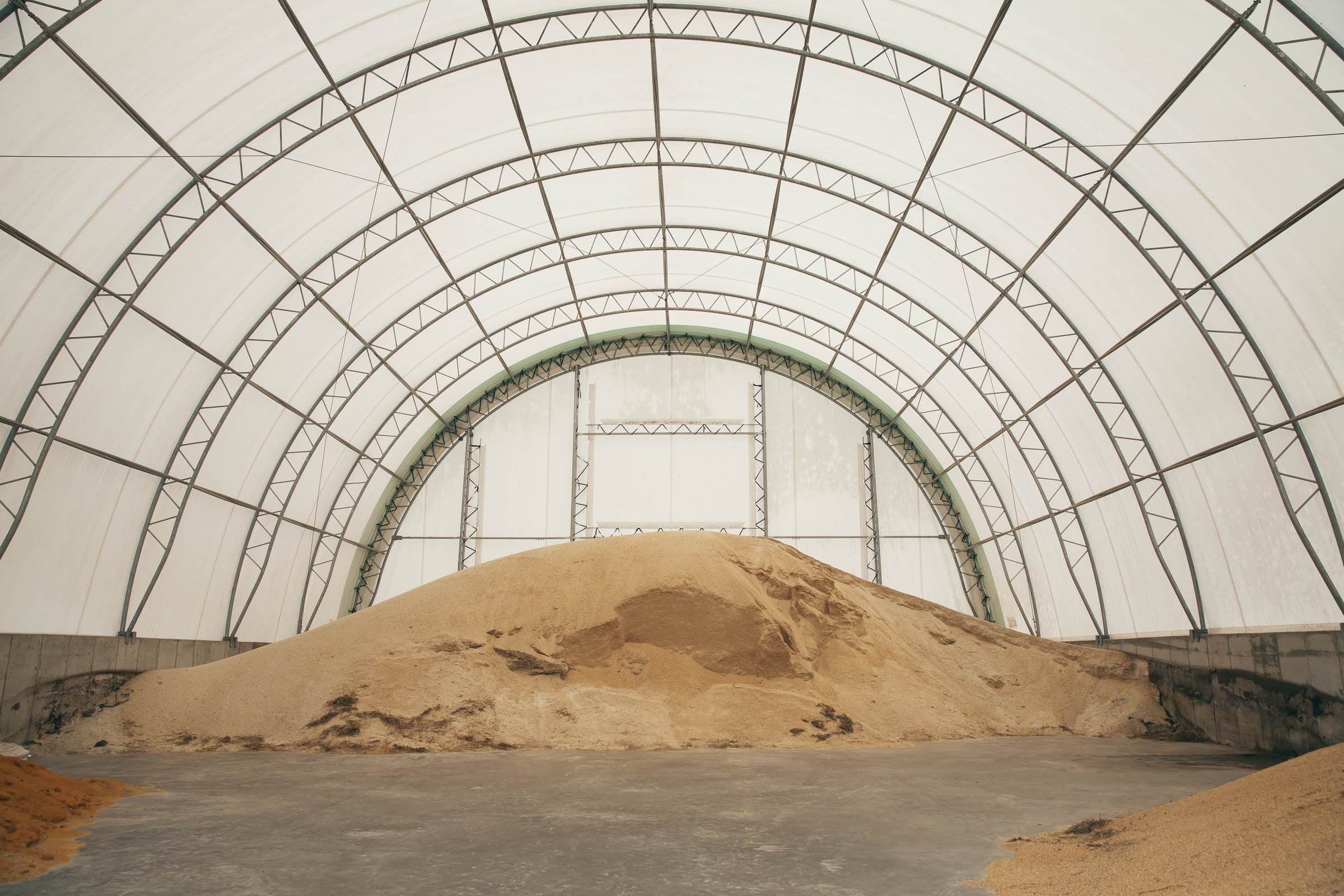
STATE OF THE ART
Our process, from growing the grasses and grains to finishing our herd, happens on our farm in Western Kentucky. This allows us to control every aspect from seed-to-harvest.
The process begins in the pastures where our calves spend their first 8 to 9 months grazing in open fields. Afterwards, they are finished for 500+ days in a clean and spacious composting feed barn just 1.6 miles down the road from the pastures. Here, the cattle’s diet comprises a blend of home grown corn and a high ration of roughage, plus some essential minerals for optimal nutrition. The combination of their slow feeding process and balanced diet keeps the animals healthy throughout, so that no hormones or antibiotics are needed. Finally, the finished cattle are processed locally and humanely just 26 miles away from our barn.
The key to our unique yet complex process lies in our state of the art Compost Finishing Barns. Thanks to our work with the University of Kentucky College of Agriculture, we designed and built an eco-friendly environment for finishing our cattle. Resting on the top of a hill behind our grain storage facility, the barns were constructed to provide a comfortable and sustainable environment for our cattle. Having the ability to grain-finish on site means a massive reduction in our carbon footprint.
Our barns are meticulously designed to prevent any runoff into groundwater supplies.
We receive truckloads of sawdust from a local sawmill to use as bedding for our calves.
Daily, and sometimes twice a day depending on the weather, we mix the sawdust with the waste, allowing microbes to decompose the organic material aerobically.
Annually, we harvest the compost from the barn and use it as an excellent organic fertilizer for our crops.
We collect rainwater from the barns and fields and repurpose it for irrigation on our farm.
With the use of fans, open ventilation, and composting, our barns remain virtually free of insects and foul odors.

